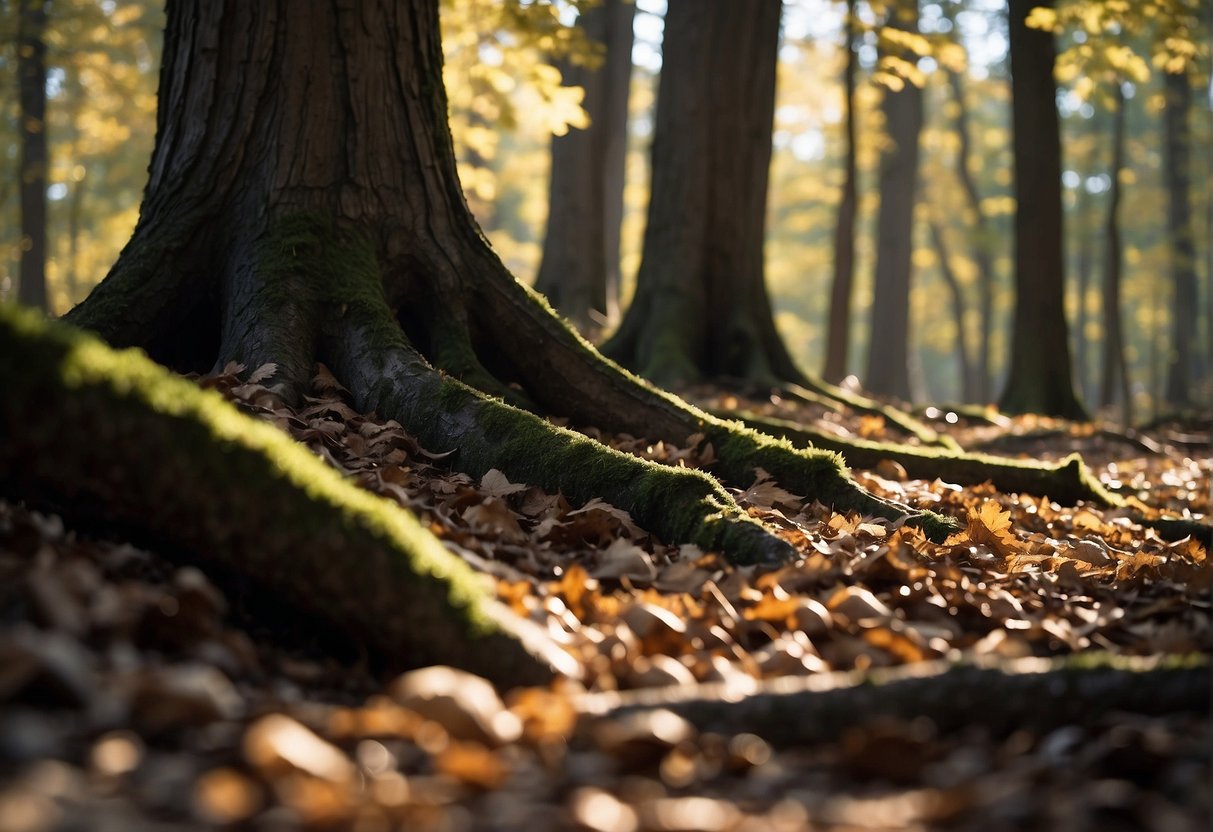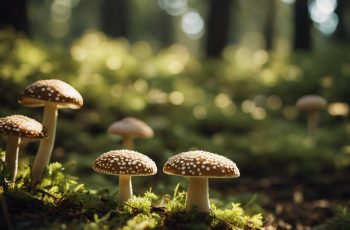As spring unfurls its green tapestry across the forests, you as an outdoors enthusiast are presented with a treasure hunt directly tied to the cycles of nature—the pursuit of the elusive morel mushroom. Renowned for their subtle earthy flavor and honeycombed caps, morels stand among the most sought-after edible wild mushrooms, and there is one arboreal landmark that signals their presence: the elm tree. Understanding the intricate dance between morels and elms can turn an amble through the woods into a productive foraging expedition.
Elm trees have long been recognized by seasoned mushroom hunters as morel magnets. Their tall silhouettes and distinctive bark become landmarks in the landscape of spring foraging. When you spot the characteristic, deeply furrowed, grayish bark and asymmetrical leaves of an elm, it’s time to scan the ground nearby. But it’s not just any elm that plays host to these gourmet fungi; more often than not, it’s the deceased elms that provide a fertile foundation for morels to flourish.
Adopting an intimate knowledge of elm trees amplifies your ability to discern their health and spot the subtle signs that point towards a successful hunt. Patience, observation, and the wisdom to identify these sentinel trees of the morel realm are your allies. As you traverse through woodlands this spring, keep your senses attuned to the elms standing guard over the forest floor—they might just lead you to the coveted prize of morels waiting silently in the leaf litter.
Understanding Elm Trees
When you’re seeking morels, it’s important to recognize the critical role that elm trees play in their growth and to understand the challenges that these trees face.
Identifying Elm Trees
You’ll find that elm trees are distinguished by certain features that are crucial for identification. Their bark transitions from smooth in their youth to deeply furrowed with age and exhibits a gray to dark grayish-brown color. When the leaves emerge, look for an asymmetrical base and double-toothed margins, typical characteristics that set elm apart from other tree species.
Significance of Elms to Morels
Elm trees are renowned as hotspots for morel mushrooms, especially dying or dead ones. These trees create an ideal habitat as they begin to decay, providing the conditions morels need to thrive. It’s a symbiotic relationship; the nutrients released by the elms are precisely what morels require.
Common Elm Tree Diseases
Dutch elm disease has wreaked havoc on elm populations, drastically reducing the number of these once-common trees. This disease, caused by invasive bark beetles, leads to the wilting, yellowing, and eventual death of affected elm trees. Keeping an eye out for signs of disease can aid you in identifying elms and assessing their health, which in turn, impacts the likelihood of finding nearby morels.
The Life Cycle of Morel Mushrooms
As a morel enthusiast, understanding the life cycle of morel mushrooms is key to identifying the prime conditions for your foraging adventures. This knowledge can lead you to fruitful spots during the morel season.
Mycelial Growth
Morel mushrooms begin their life as a network of mycelium underground, which is a mass of thread-like cells that can extend over a large area. This mycelial network is the primary growth stage of morels and can remain dormant until conditions are just right. It relies heavily on adequate moisture and the right temperature to initiate the formation of the morels you seek.
Spore Dispersal and Germination
When mature morels release their spores, these microscopic units are carried through the air to start new colonies. The spores require suitable soil conditions to germinate and develop into new mycelial networks. As a forager, you can’t see this process, but it’s happening all around during morel season.
Symbiosis with Trees
The mycelium of morel mushrooms forms a mycorrhizal relationship with certain trees, a symbiotic and mutually beneficial interface. This symbiotic connection, called mycorrhiza, is particularly common with elm trees. As morels thrive in these conditions, look for dying or dead elms as potential hotspots for morels.
Foraging for Morels Near Elm Trees
Elm trees create ideal conditions for morels, so knowing where and when to search is crucial.
The Best Times and Places to Look
The optimal time for foraging morels is late spring. You’ll have the best chance right after a warm rain when the soil temperature reaches about 53 degrees Fahrenheit. Start your hunt in deciduous forests known for morel mushrooms, particularly areas with dead elm trees. Morels often appear in woods or at the edges of forests and orchards, especially in old apple orchards.
Indicators of Morel-Friendly Habitats
Morels and dead elm trees share a special bond, making elm woodlands preferred habitats. Look for elms with peeling, grey bark—signs they’re no longer living. These habitats are prime spots, but also seek out areas with moist, well-drained soil and a mix of tree species, including ash and poplar.
Safety and Ethics of Morel Hunting
As you hunt for morels, prioritize safety by letting someone know where you’ll be and carrying a GPS or map. Always keep the ethics of foraging in mind: take only what you need, respect private property, and leave the area as undisturbed as possible. Be sure to only pick mushrooms that you can positively identify to avoid consuming toxic varieties.
Preserving Elm Trees and Morel Habitats

Elm trees play a crucial role in maintaining healthy ecosystems and are pivotal for the proliferation of morels. Both are threatened by invasive diseases and require active management.
Combating Tree Diseases
To preserve elm trees, it’s imperative to address Dutch Elm Disease (DED), caused by invasive fungi spread by bark beetles. By identifying and swiftly removing infected trees, you help prevent the spread of DED. Similarly, the emerald ash borer poses a grave threat to ash trees, which also serve as a habitat for morels. Use approved insecticides and biocontrol methods to manage these pests and keep tree populations healthy.
Conservation Efforts
Engage in conservation efforts to protect these critical habitats. Participate in local tree-planting drives and support organizations involved in restoring native vegetation. You can also contribute by being mindful of not harvesting elmwood unless certified as disease-free. This measure aids in preserving the symbiotic relationship between the elm trees, vegetation, and morel mushrooms, ensuring they thrive together.
Promoting Healthy Fungal Growth
Increased knowledge and education about morel mushroom habitats are crucial for both their conservation and ethical foraging practices. Promote healthy fungal growth by respecting the harvesting seasons and not disturbing the mycelium. Share your understanding with fellow foragers, cultivating a community that values and safeguards these delicate ecosystems.
Remember, your actions directly affect the conservation and resilience of elm trees and morel habitats, securing them for generations of outdoorsmen to enjoy.


